Researches
Discovery of Hot Oxygen Gas Streaming Away from Distant Galaxies: Witnessing the Final Stage of Galaxy Buildup
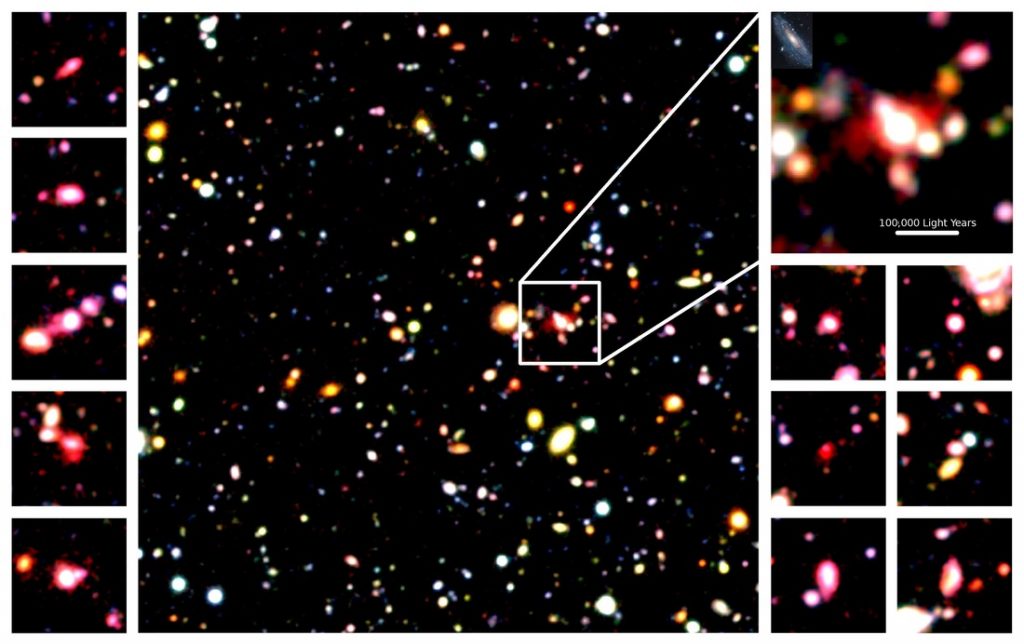
Using wide-field imaging data of Subaru Telescope, a team of international astronomers led by Suraphong Yuma and Masami Ouchi has discovered twelve galaxies expelling hot oxygen gas extending up to 250 thousand light years, beyond the sizes of the galaxies. These galaxies are located 9 billion light years from the Earth. Some of these galaxies host a super massive black hole (SMBH), while some show violent star formation with no SMBH. The vast amount of energy produced by the SMBH or star formation activity is able to heat up the gas in the galaxies and drive the strong outflow of hot oxygen gas. These distant galaxies are thought to be in their final phase of galaxy growth, with star formation being quenched by the expulsion of gas needed to produce new stars. This is the first discovery of the large physical extents of these energetic oxygen-gas outflows driven by SMBH and star formation.
(The content provided here was taken from press release at ICRR, UTokyo in 2013.)
Large-scale Structure of the Universe
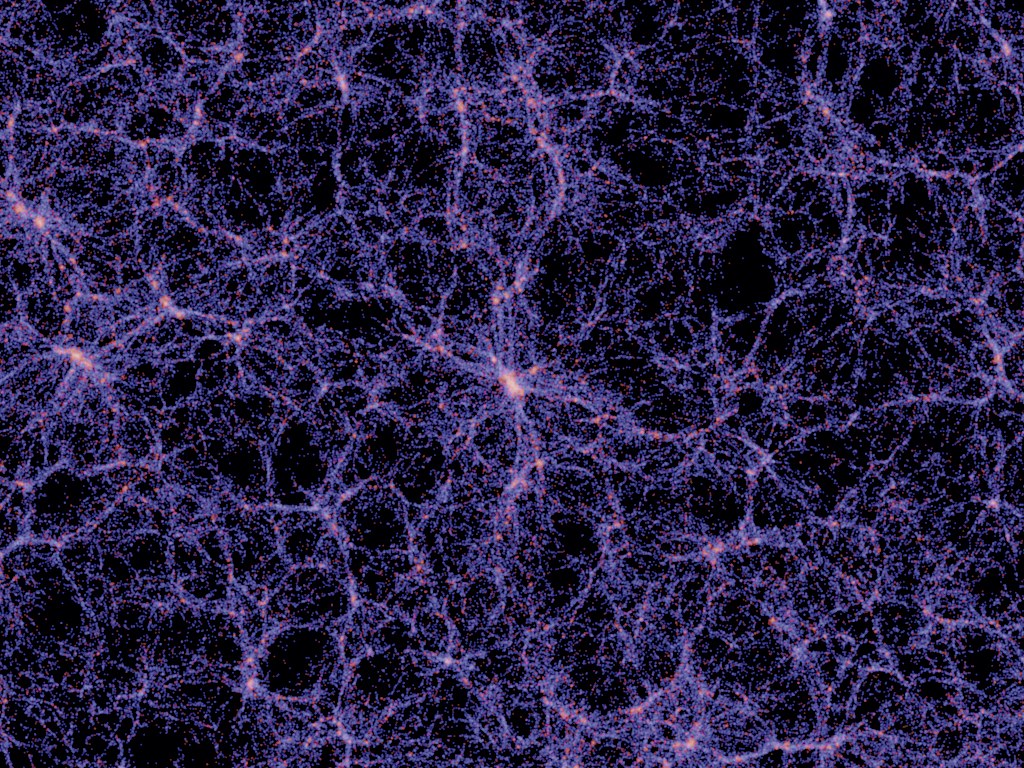
On a scale much larger than individual galaxies and groups of galaxies, the Universe comprises of different types of structures which we called cluster of galaxies, filaments and voids. These correlated structures have size of billions of light years across and are operated under an influence of gravity.
The pattern on large-scale structure is a great source for astrophysicists to understand gravity and the initial conditions of the early universe. Our research group focuses on how we could extract the information from these structure and somehow refer to the initial condition at the earlier time.
Dark Energy Model
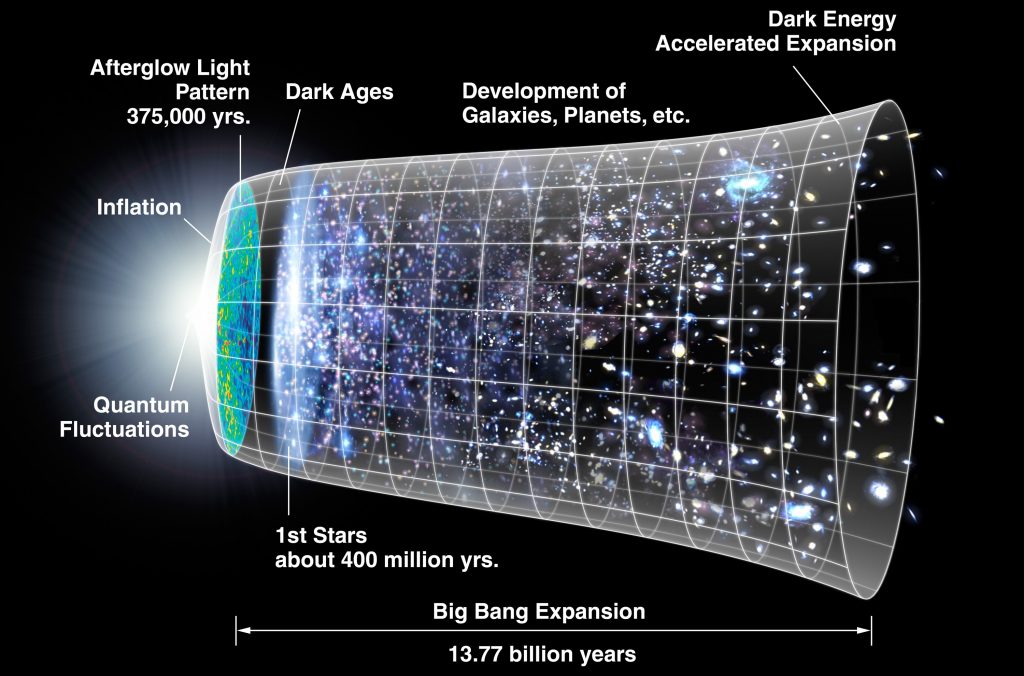
Our Universe is expanding with acceleration. This is the fact that has been well verified and has been puzzling many astrophysicists for many years. Because normal matter cannot accelerate the universe. We need a different kind energy with negative pressure. This is known as dark energy.
Astrophysicists speculate the sources of dark energy or the accelerating expansion of the universe with different hypotheses. For example, a modification of Newtonian gravity or Einstein theory of Gravity, or even introducing a new form of substance called a scalar field. This is a very active field of research in cosmology.
Application of Neural Network in Cosmology
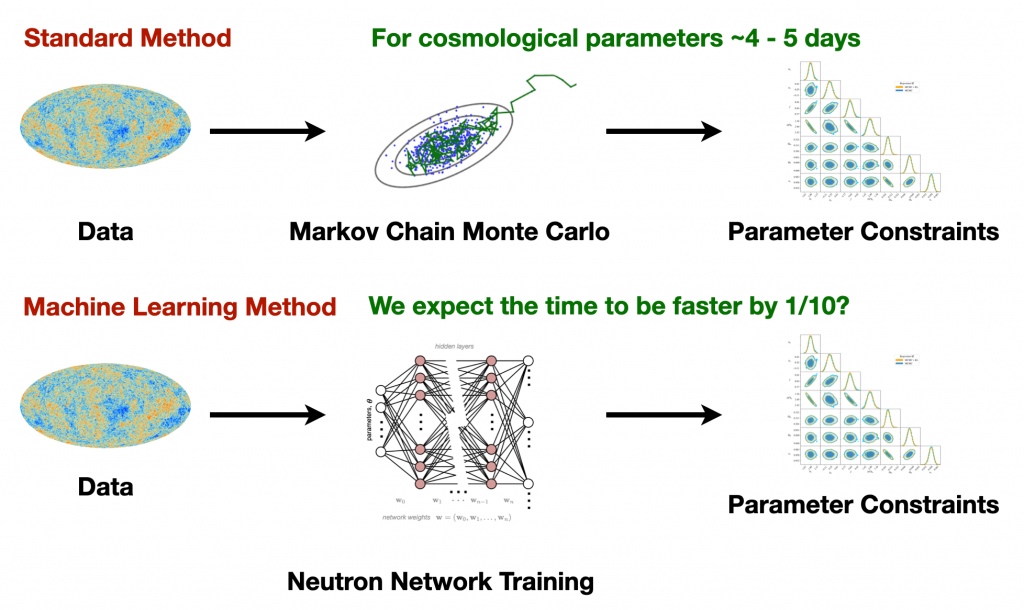
Due to the nature of astrophysical researches, we have to deal with a large amount of data. However, we are only interested in the some value of parameters of interest in our models. The standard method that we normally use are called Markov Chain Monte Carlo methods. This method is computationally intensive – the more parameters we need to constrain the longer the time to run. Let me give you some example, for a standard cosmological models with 6 parameters, the time we need to constrain the data on a single machine would be roughly 3-4 days. For a more sophisticated model, the time may take for a week or more. We could shorten the time by using neutral network. It is estimated to run 10 time faster with the same amount of constraining power.
Seeking for the origin of the Hubble sequence:
Do disk galaxies we see today already in place atz~2? (Yuma et al. 2011 & 2012)
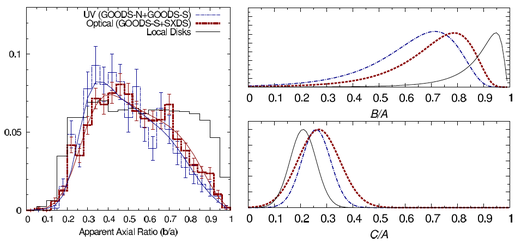
Kinematic studies reveal that star-forming galaxies at z~2 show the same rotation property as disk galaxies seen in the present-day universe, suggesting that disk galaxies may already exist at z~2. I perform morphological studies of star-forming galaxies at z~2 with high-resolution Hubble images in order to examine whether or not they are indeed the same as the present-day disk galaxies. Intrinsic axial ratio of star-forming galaxies at z~2 peaks at B/A =0.7, whereas it is B/A =0.95 for the present-day disk galaxies (left figure). My studies clearly show that the star-forming galaxies at z~2 statistically do NOT have the same morphology as the present-day disk galaxies.
Despite some similar properties, the same disk galaxy as we see in the present-day universe is not established yet at z~2.
The same stellar populations of star-forming galaxies at high redshifts (z~5)
(Yuma et al. 2010)

Comparison of stellar properties between LAEs (red) and LBGs (black) At higher redshift (z > 5), there are two major populations of galaxies: Lyman alpha emitters (LAEs) with strong Lya emission and Lyman break galaxies (LBGs) with strong UV continuum. Since the relationship between these two galaxy populations is not well understood, I investigate stellar populations of LAEs at z~5 identified with Subaru images, and find that average stellar masses (10^9 Msun) and ages (25Myr) of the LAEs at z~5 are in the same ranges as those of the LBGs down to the same UV luminosity (right figure). Thus I discover that LAEs and LBGs are basically similar star-forming galaxies; no prominent difference of the stellar properties can be seen between the LAEs and the LBGs.
Strong Lyα emission from LAEs may occur by chance in the duty cycle that the galaxy manages to have proper mechanisms for emitting Lyα photons out to the observers.
Simulations of gravitational collapse to form the elliptical galaxies

According to the violent relaxation theory, elliptical galaxies have been formed as a consequence of the gravitational collapse. This process is widely addressed using N-body simulations to understand the formation and the early evolution of the primordial elliptical galaxies. It is found that the final ellipticity can be scaled by the particle number N (Worrakitpoonpon 2015).
The N-dependence has been revisited and the results suggest that there exists a critical N above which the strong symmetry breaking process is inactivated (Benhaiem, Joyce, Sylos Labini, and Worrakitpoonpon 2018). This critical phenomenon has been theoretically understood later that it could be the result of the interplay between forces and their fluctuations in the initial states (Worrakitpoonpon 2020).

One-dimensional self-gravitating dynamics

Overall evolution of systems governed by long-range interaction can be exemplified by a toy model of 1-dimensional gravity. This system has important advantages that it does not require the gravitational softening and the confining box, unlike its 3-dimensional counterpart.
Various simulations of water-bag systems demonstrate that they relax first to the quasi-stationary states (QSS). Some of the QSS can be described by the Lynden-Bell distribution function provided the relaxation is not too violent (Joyce & Worrakitpoonpon 2011). Further from those states, the systems relax to the thermal equilibrium. The relaxation time to these states has been found to increase with the particle number (Joyce & Worrakitpoonpon 2010).

